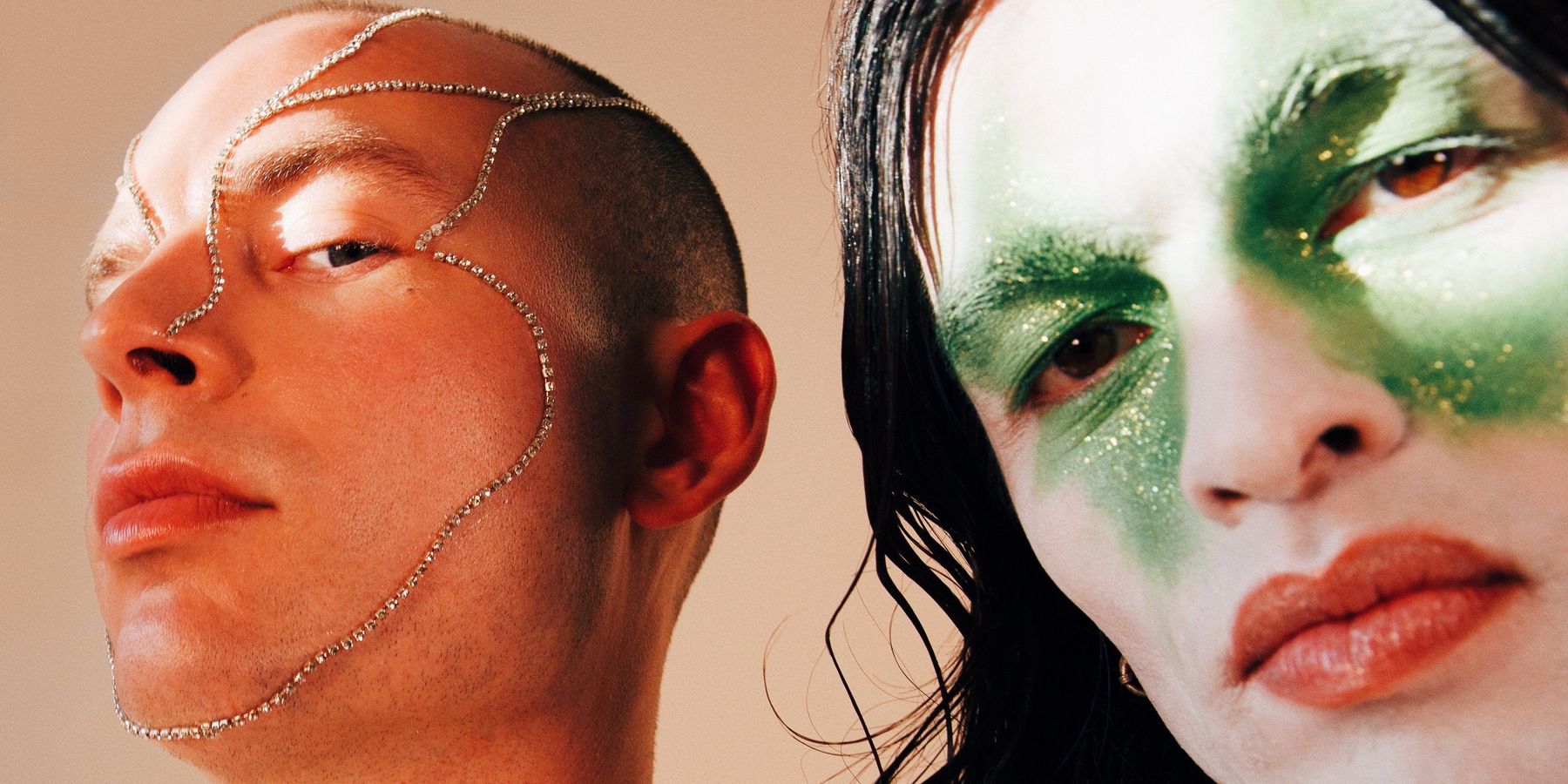
First Hate's Mission of Love
Story by Studio Förgätmigej / Photography by Lamia Karić / Makeup by Johanna Jarmide Larsson / Styling by Amanda MbalireMay 24, 2023

Just as the mysterious book in The NeverEnding Story found its way into the hands of the young Bastian, First Hate appeared in my life one day in the spring of 2016. At the time I was living in Berlin, and what looked like just another Friday, drunk on tiny bottles of vodka mixed with tea, would soon reveal to be more intoxicating than the beverage in my hand.
An old friend pushed me through thick strips of plastic into a tiny house at the foot of a massive concrete building that once used to be looked upon as something sacred. On a stage consisting only of silver tape markings on the floor and four massive speakers, two silhouettes, as I later would come to know them as Anton and Joakim, soon appeared. Up until that day I'd always thought that you needed expensive equipment or some kind of faustian bargain with a major record company to move an audience into ecstasy.
I was wrong. In a crowded room filled with cigarette smoke and strobing lights I watched how the shockwaves from the kettle drums in “Trojan Horse” made the last chunks of wallpaper finally let go from the sealing. The same time it took for the yellow paper rag to travel between the ceiling and the floor, it took me to fall in love.
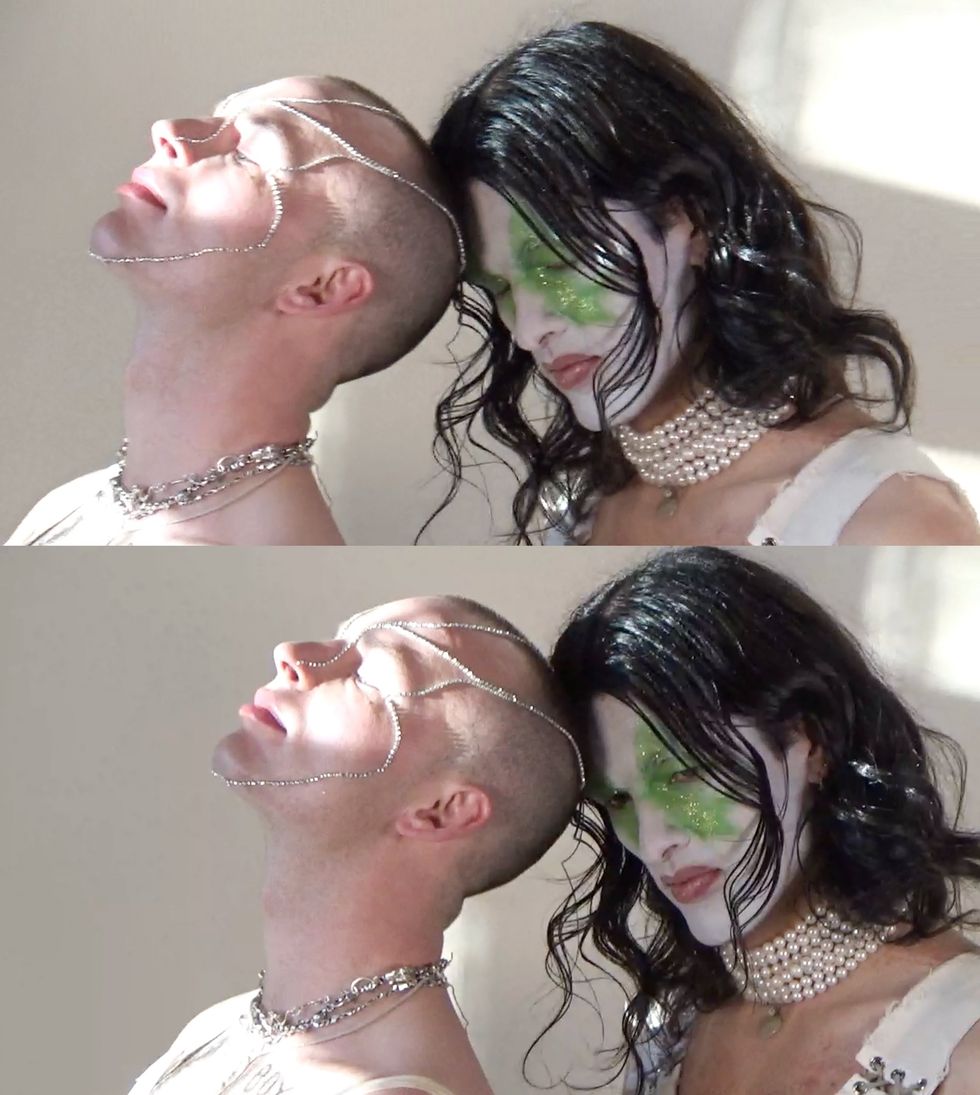
While there's sure to be the occasional algorithm or ex-partner who would have a different opinion as to who spawned my almost manic fandom of First Hate, this is how I choose to remember it. In any case, it won't be easier for someone like me not to mythologize my relationship with First Hate when one of the band's earliest emblems is very reminiscent of Ayrun, the braided snake from The NeverEnding Story.
And while new bands and trends have come and gone, they have always been there, like a hub, a reminder of magic and constant companionship.
The recent transition towards a more “poppy” sound has opened up the First Hate universe, transcending the dungeons of Copenhagen to the wide open dance floors. With everything that we have been through the last three years, the pink bubblegum and colorful visuals of Cotton Candy (Escho and Cascine, 2022) is what we all need right now.
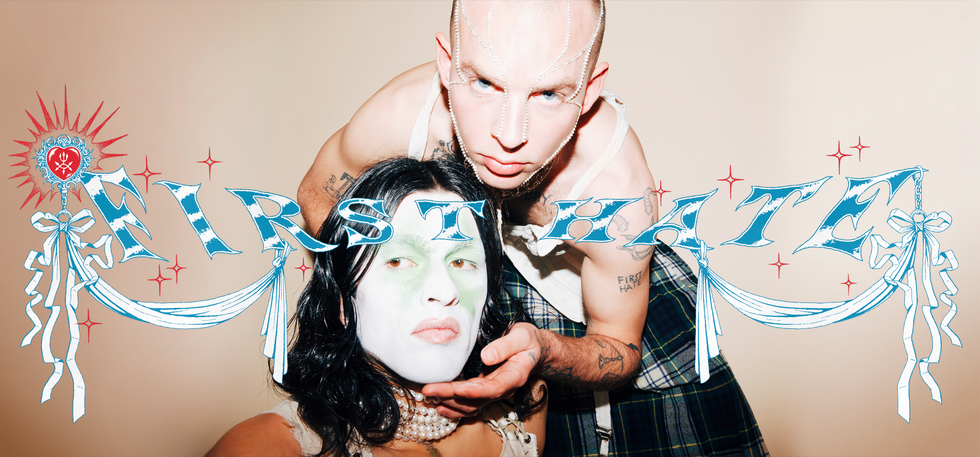
We needed it so much that two tickets to a First Hate show in Stockholm turned into a joke, that led to a phone call, an email, some DMs and finally standing on a driveway in front of a photo studio, nervously waiting for Anton and Joakim to arrive in a cab.
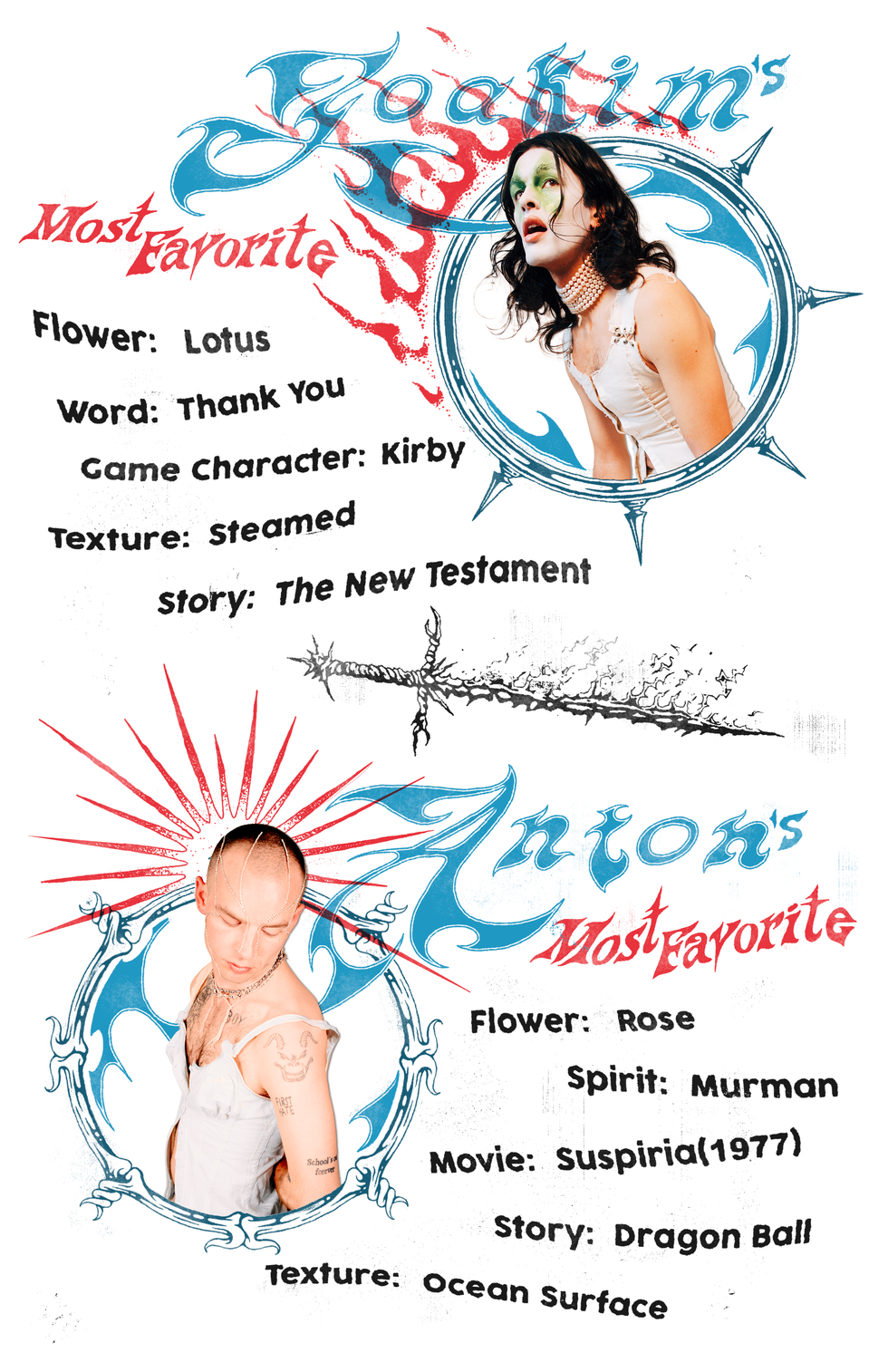
Let’s start with your symbol. What does it mean and who came up with it?
Anton: Even though the name [First Hate] might suggest differently, we are on a mission of love. The symbol Is called the Lovecrux. Crux means the decisive or most important point. The place where two roads cross. Like the X.
Joakim: We created the original rendition of the Lovecrux together at Anton’s old place out at Refshaleøen. It’s a symbol of love, even if it isn’t obvious at first glance.
Anton: It’s a magical sigil that holds our power.
What does First Hate mean to you?
Anton: With everything that has a name, the words the name consists of sort of loses its original meaning and just becomes that thing. Like I'm Anton, I heard that name means fragile flower. Maybe I am a fragile flower, but apart from that the name just kinda means “me.”
Joakim: First Hate means a lot to me and has been a constant in my life through some very transformative years. Over the years it’s becoming clearer to me how much the project is a result of daydreaming. In the end, First Hate is a vessel for traveling the world together and an expression of some of our experiences in this human life.
Since starting out and your first self-titled EP release in 2014, has First Hate changed you in any way?
Anton: Life has changed us and First Hate has been a big part of our lives. We have a lot of memories and stories that we share together from touring, making music and art. Putting yourself on display, stepping onto a stage or releasing very personal songs is a really transformative process. All people have multiple personas, moods and people living inside of them. When people use they/them pronouns, I like to think that it covers the whole group of personas arriving. When you are an artist you naturally get to put on your different personas more often. I think everybody should call themselves an artist and remember to be creative every day even if you never show your art to anyone. It's not about making something “good,” it's about playing. And we should always imagine ourselves as a group of personas arriving in a room.
Joakim: First Hate has definitely changed me in a lot of ways. One of the ways is performing in front of others and doing things despite fearing them. When we first started out performing the first First Hate songs that Anton had written, I was just playing two notes on the keyboard for most of the songs, but even that was almost impossible to do because it was so nerve-racking for me to be in front of others. And because I had absolutely no experience with keyboards.
What does it mean to perform and play live to you now?
Anton: It means more than I admit to myself. I just have an urge and a drive to stand in front of people and sing and dance my heart out. So that’s what I do and it comes very naturally. Meeting people after the shows, that's the real theater and the hardest part of the performance.
Joakim: The act of performing and playing live itself doesn’t mean so much to me, to be completely honest. Obviously, we have had so many beautiful live experiences, but creating the songs and putting melodies together is where my heart is at.
Is the stage and performance an important part of the creative process or a necessary evil, a means to an end?
Joakim: Experiences from performing can’t help but influence the process of writing our songs. If never performed live, I think we would be making more ambient and instrumental tracks. But the energy and expectations from the live part is fun to play with in the creative process. I think there’s an interesting synergy in performing and creating things to perform.
Anton: We always consider how something will work live. It can sometimes be limiting, but it also helps deliver something that is human and more down to earth.
Is it the same Joakim and Anton on stage as standing in line to buy groceries on a mundane Tuesday in November?
Joakim: Very much so.
Anton: Pretty much.
Did you ever have to reinvent yourself — or the idea about yourself — to be able to make music?
Anton: No, it's more like we have to stop the urge to reinvent ourselves completely. Trash the name and the legacy and do something completely different. It is somehow harder for us to stick to what we have, but we trust it and do it anyway. But let's see where we are in 10 more years.
Would you still make music if no one cared?
Anton: That’s impossible to answer. I simply don’t have the ability to make music people don’t care about.
Joakim: Yes, music is a diary. I’m not even sure that people care now.
What’s your relationship to approval?
Joakim: I absolutely love it.
Anton: I’m half careless and half heartache and self-hate. People's approval means more than I would like it to, but sometimes getting approval from someone you don’t respect can be just as terrible. We all just want to be seen as something good don’t we?
(On Anton) Pants: Kismet, Necklace: Maria Nilsdotter, Shoes: Puma; (On Joakim) Top and shorts: Lazoschmidl, Boots: Our Legacy
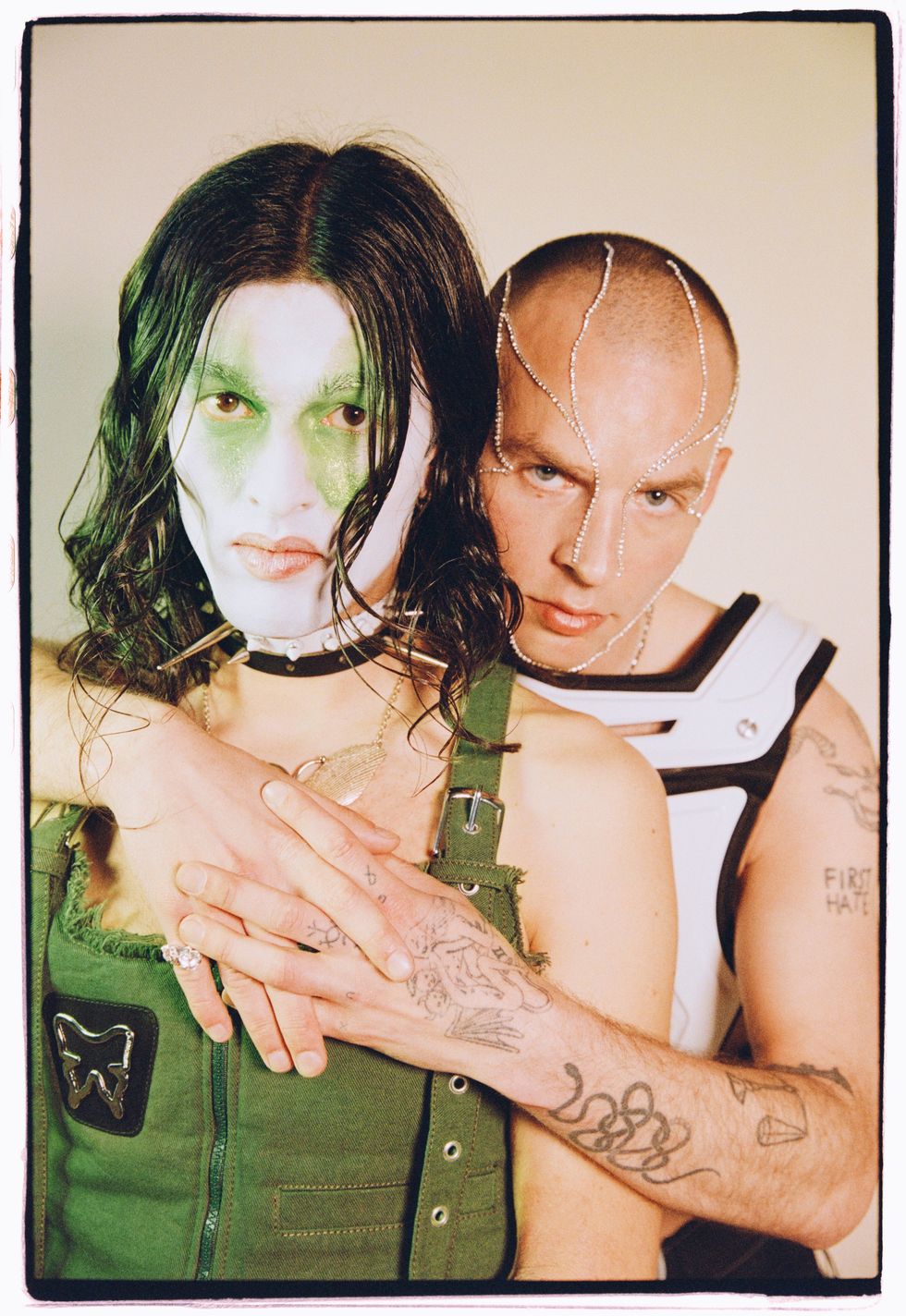
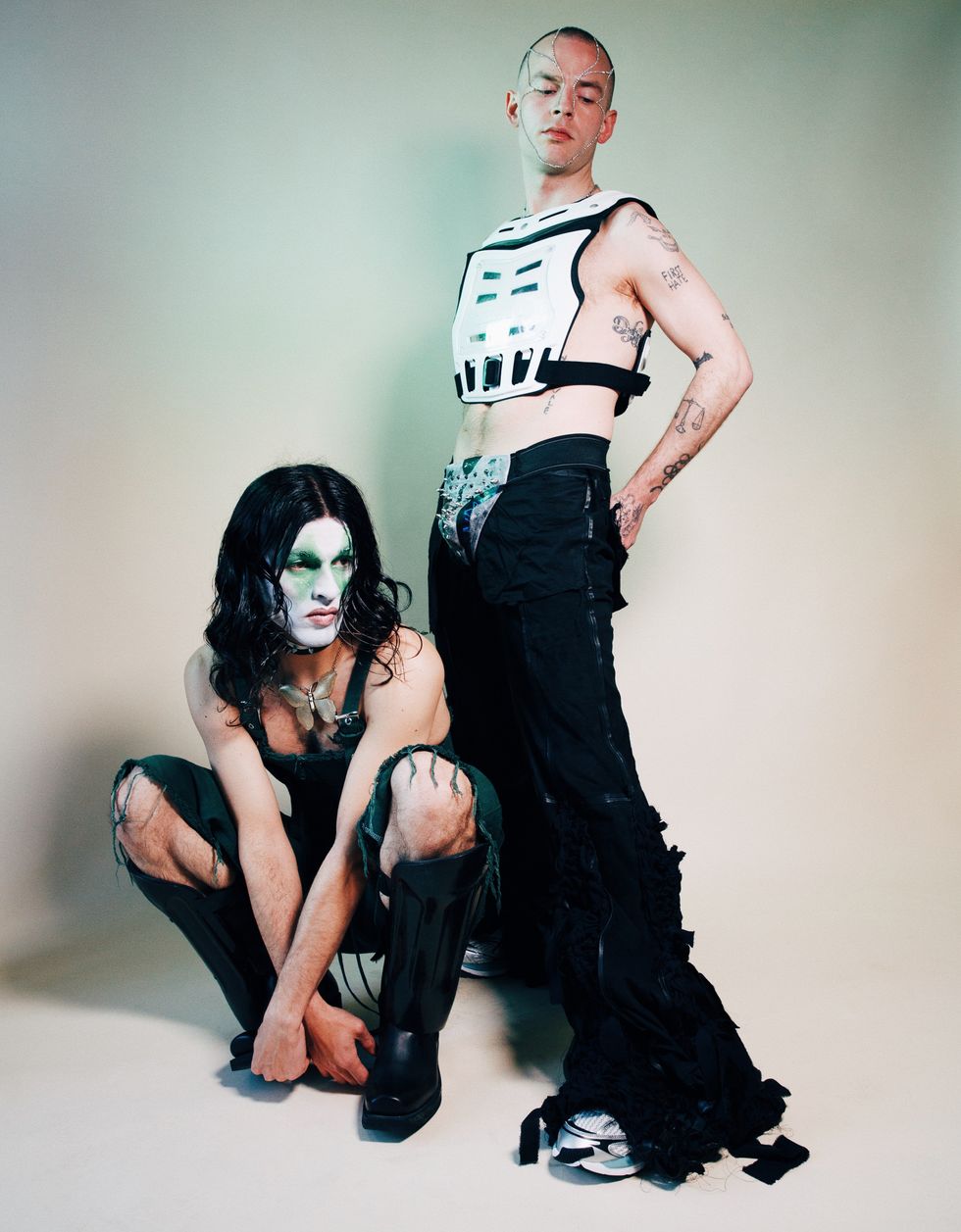
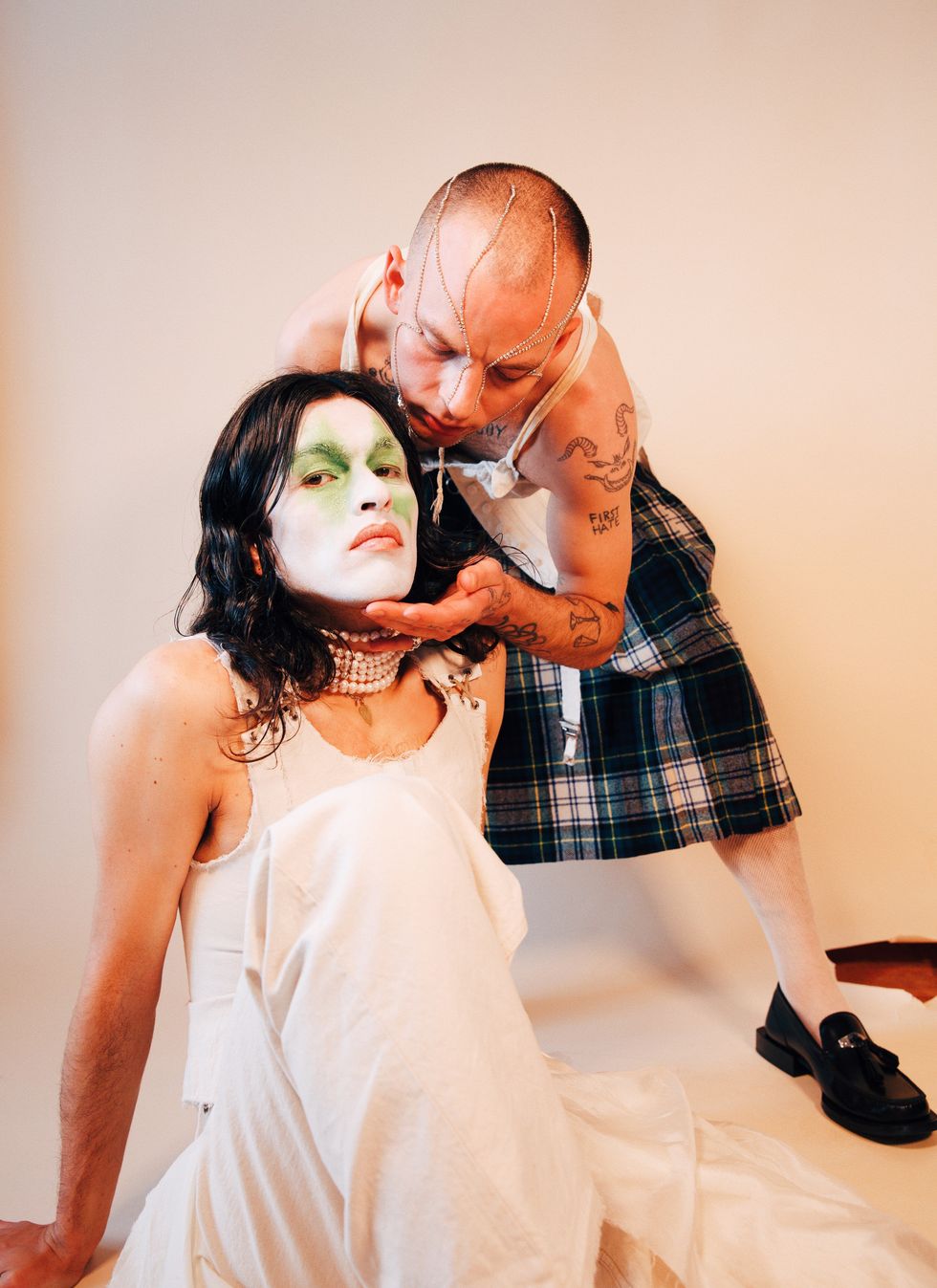
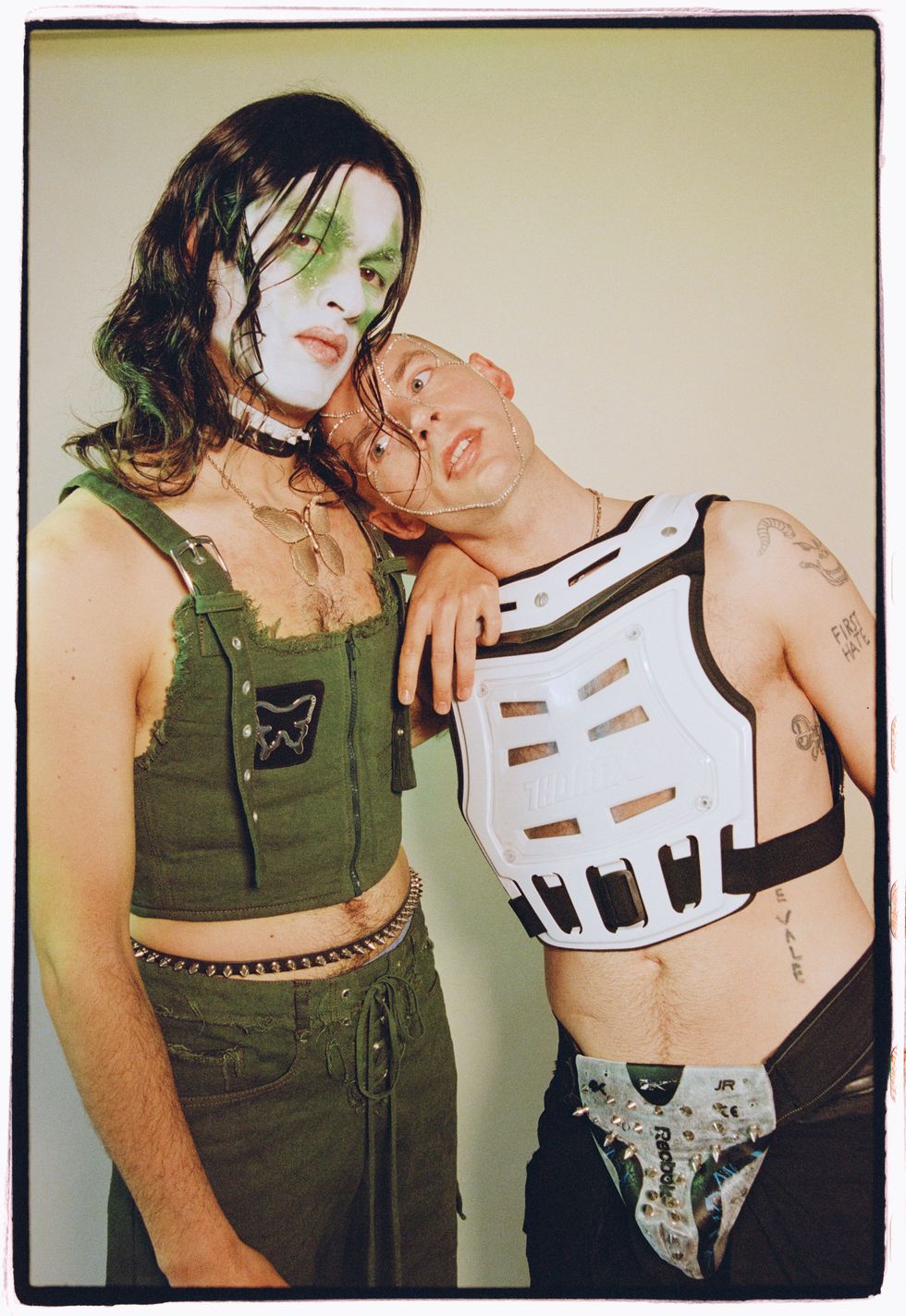
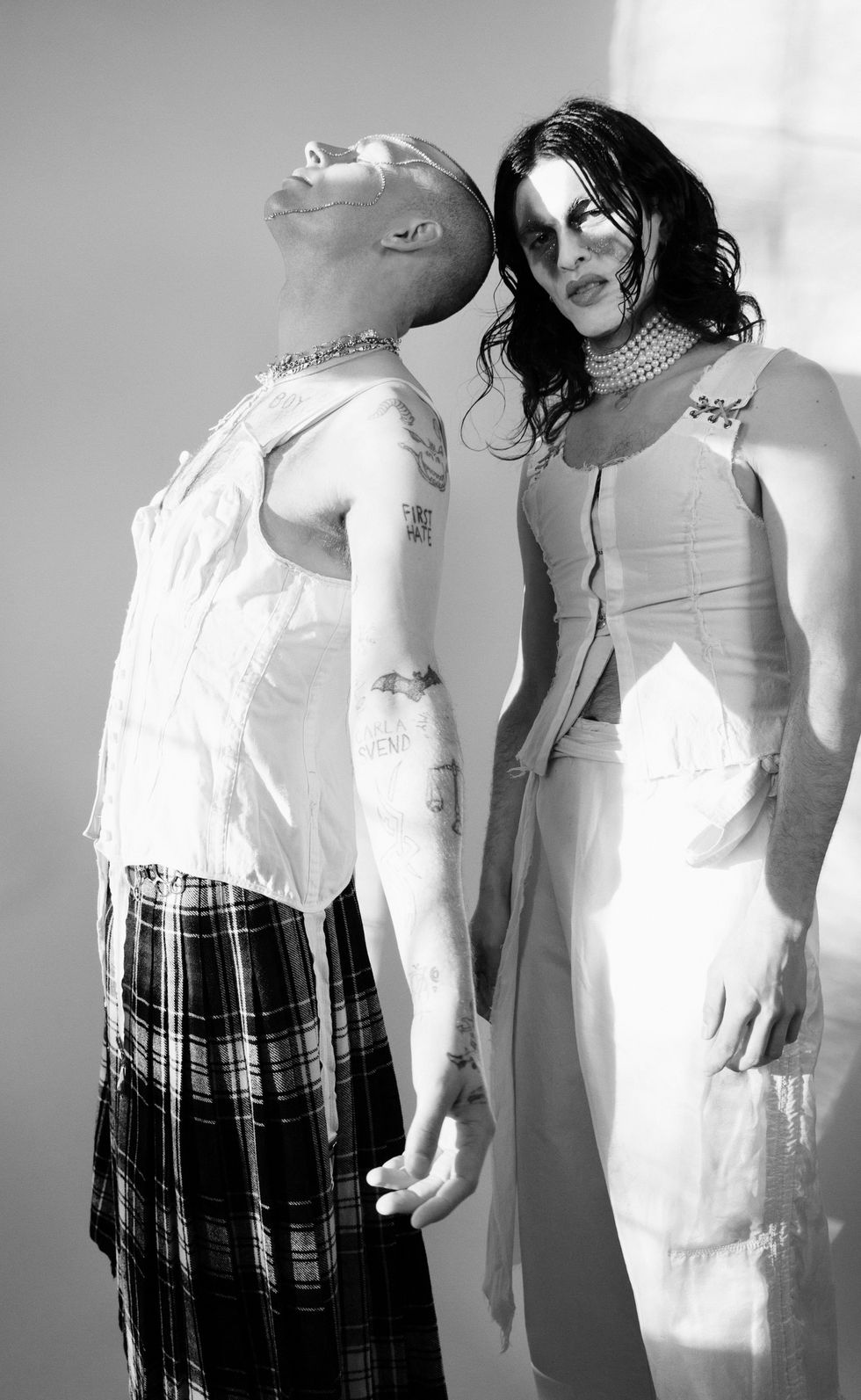
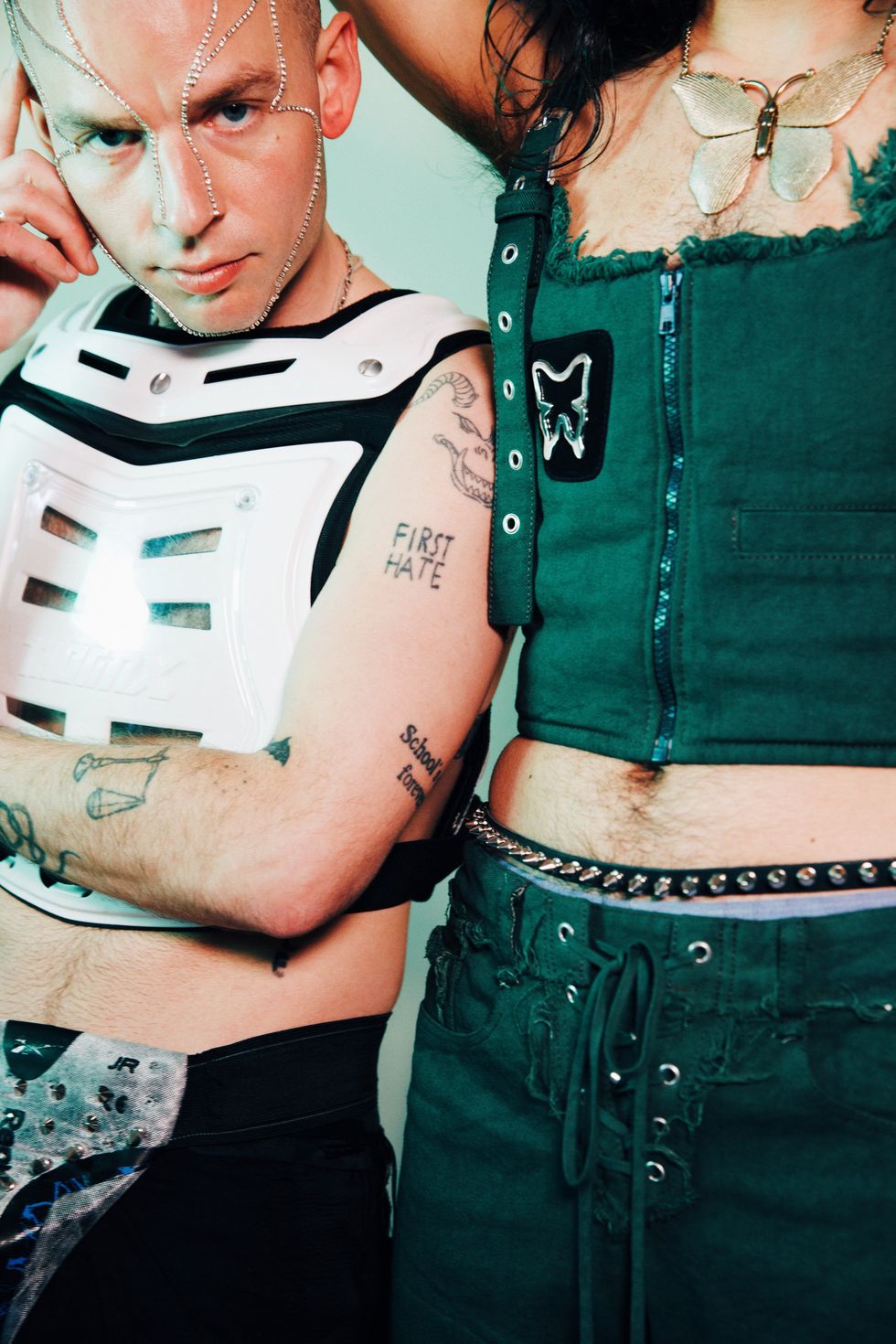
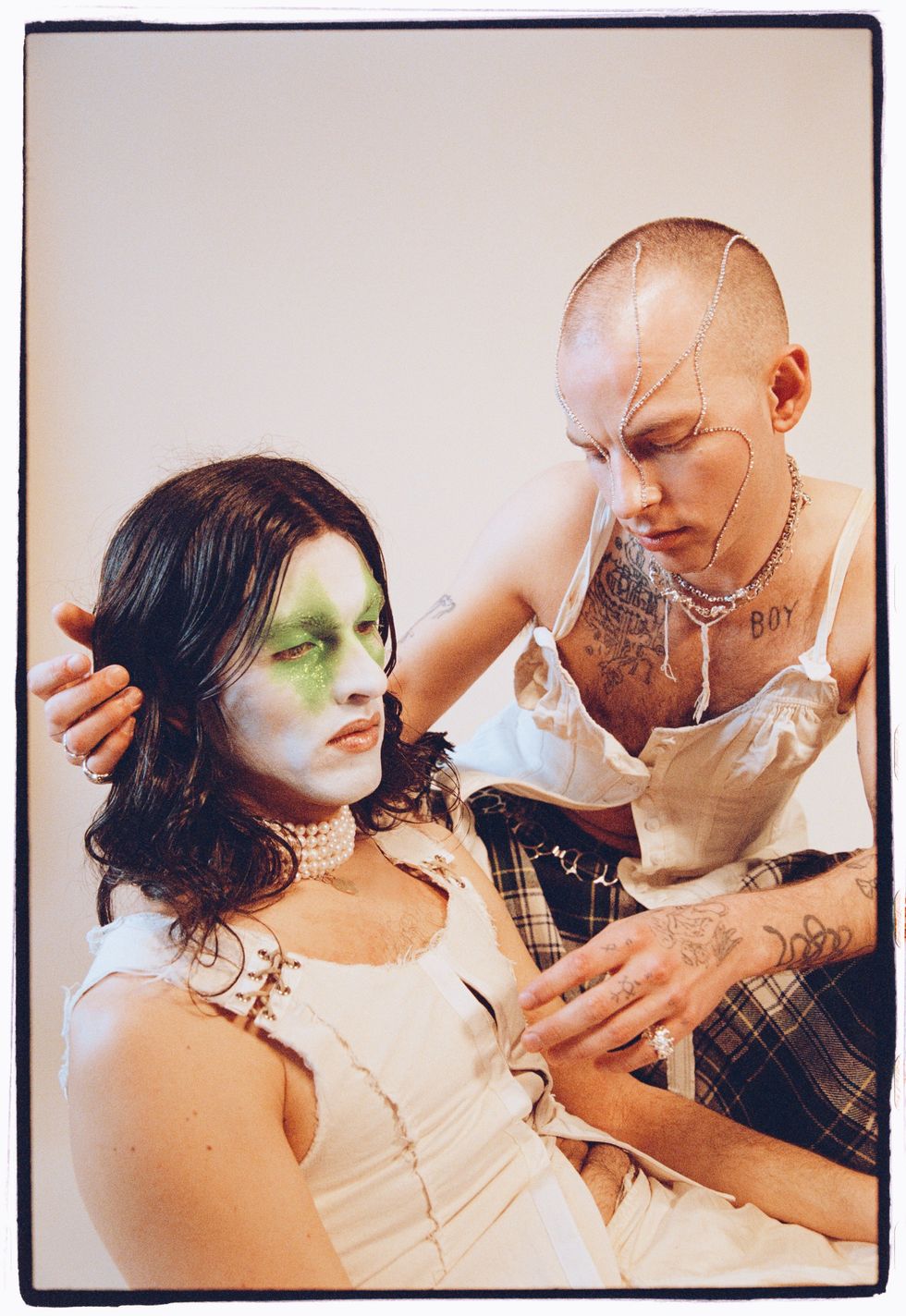
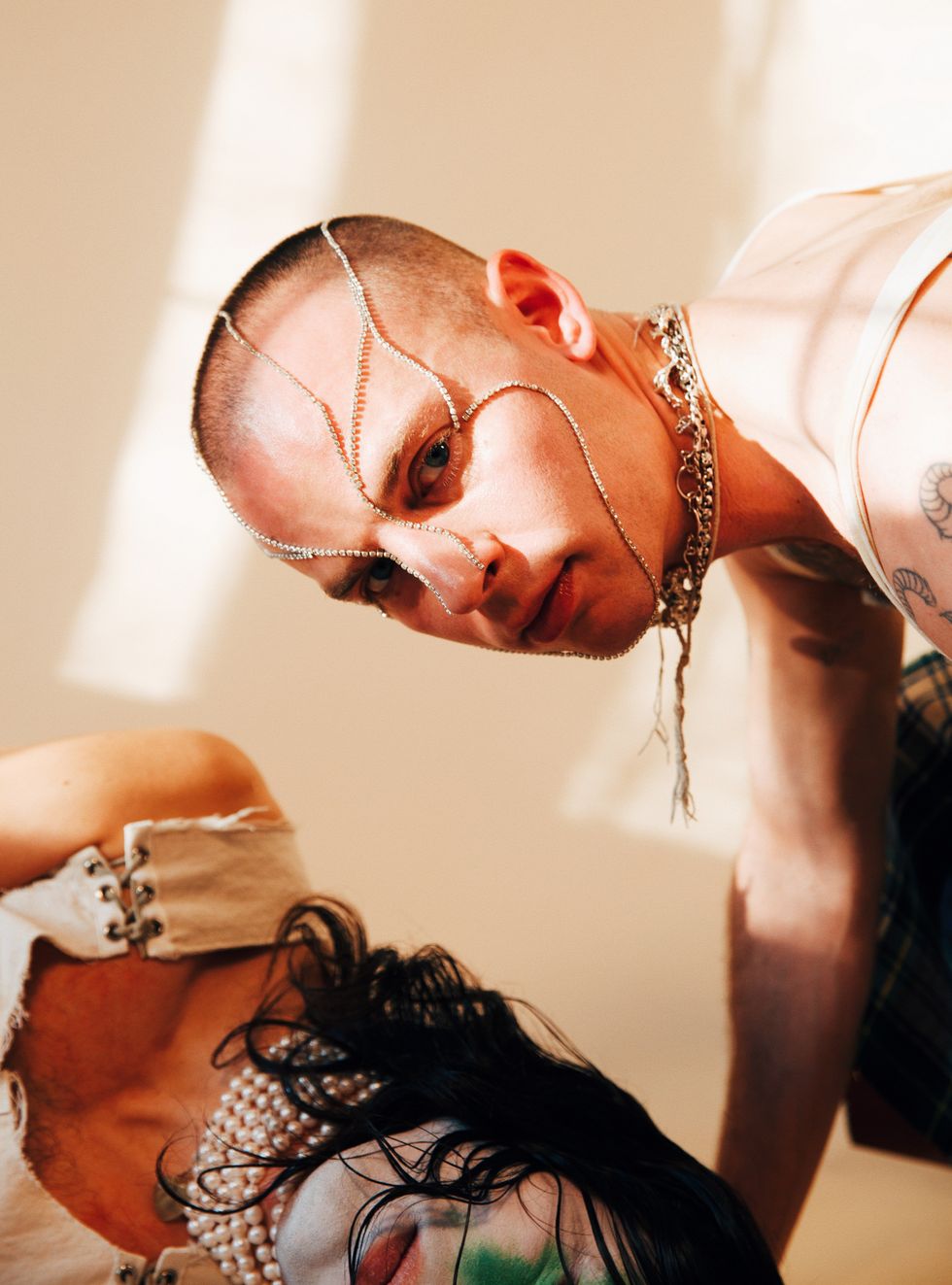
Does paradise exist and if so, where and what is it?
Joakim: Paradise is a state of mind. A tranquil feeling of content, where you know everything is exactly as it is and it couldn’t be any other way. Like you could live forever or die in the moment and both would be equally perfect. It’s kind of a hard thing for me to put into words.
Anton: I believe hell and paradise are inside everything. I don’t believe in the afterlife as another place we go to after death. I think the afterlife is when the body deteriorates and gets absorbed into new organisms and becomes new life. Paradise and hell are places we visit on the way there. But what do I know? I can’t wait to die and find out what happens.
Does hell exist and if so, where and what is it?
Both: It’s in Oslo.
Do you have a perception or idea about your fan base? What do you think the people who listen to you have in common?
Anton: It’s always a funny thought when we look at our Spotify statistics and see a country with one listener or two listeners, like right now we have two listeners in Tanzania. And you think to yourself, do they know each other? Would they fall in love if they met? What do their lives look like? And you can't help but wonder what epic scenes in people's lives your music might have been the soundtrack to. It’s a wild thought.
Joakim: I think a lot of people that listen to our songs are daydreamers and people that are sensible to the world we live in. We have been overwhelmed sometimes by how dedicated some of our listeners are, sending long sincerity fan letters or getting tattoos of various First Hate motives. I think there is a soft feeling of loneliness and a melancholic positivity that many people share with us.
You have always had beautiful music videos and album art. Is what we see in your art something that was in the songs from the beginning? How do you go about putting images and color to your music?
Anton: We both think very visually. Images pop up in our heads in the very early stages of writing the songs and help shape the songs. I have a music video for all the songs playing in my head. “Trojan Horse” never had a video, but if it did it would be the big wooden horse arriving at Troy, at a toga party. Out jumps a hundred warriors and slashes everybody to pieces with swords in the rhythm of the music. Blood everywhere, Tarantino style.
If First Hate made a movie, what would it be about?
Anton: I have actually been writing a script since I was in the 8th grade. It's about witches and mind control. A kind of Suspiria meets Beyond the Black Rainbow. But you will see it one day. I plan on becoming a movie director in my older years.
Joakim: It would be a beautifully shot and slightly naive art house movie about two bank robbers/self taught chefs that wake up in the distant future and try to find a way back. A mix of Samurai Jack, Fallen Angels and The Matador with a lot of home made special effects and loud soundtracks. First scene is the main characters waking up in cryo chambers in a back alley in a huge futuristic but worn down megatropolis, and the last scene is a happy but also melancholic ending where the characters and friends they met along the way open their restaurant. Shot in black and white, except for the dishes and with a long monologue ending it.
On the theme of love, what do you mean to each other?
Anton: I love Joakim, he makes me laugh every day and he is very brave. In order to be brave you have to be afraid otherwise it's not bravery. Joakim worries about a lot of things, but then just goes ahead and does them anyway. I really respect that. People naturally fall in love with Joakim when they meet him, he is like an easygoing raccoon.
Joakim: Anton is family to me. We have experienced so much together just the two of us, and I think the direct and indirect influence we have had on each other is kind of hard to overstate and our relationship has transcended being everyday friends. Anton has taught me a lot and I look up to his endless stream of what seems like effortless musical strokes of genius and a way of improvising everything in the moment and always coming out with a beautiful result. Apart from that, he is one of the absolutely funniest people I know.
Lastly, we are curious to hear about how you met. In terms of First Hate origin stories, we’ve read everything from you two meeting at a cat sanctuary in Rome, to beaming together during a chess camp for brilliant minds in Schweiz. So what’s First Hate’s origin story in 2023?
Anton: We actually met when we worked together in a toy store called A.B Legetøj (A. B. so it would be first in the phonebook). That was many years ago. The toy shop is still there, they have a lot of cool collectors items and action figures. Drop by if you are in Østerbro, Denmark, the neighborhood where we both grew up.
Joakim: We actually met quite late in our teens at a teenage boys’ group for arachnophobia just outside Copenhagen. Anton brought a spider to one of the meetings and we kind of clicked. I guess we realized we were the only two that weren't scared out of our minds and sort of bonded over that.
We all have the right to our own origin story, so let’s just leave it at that.
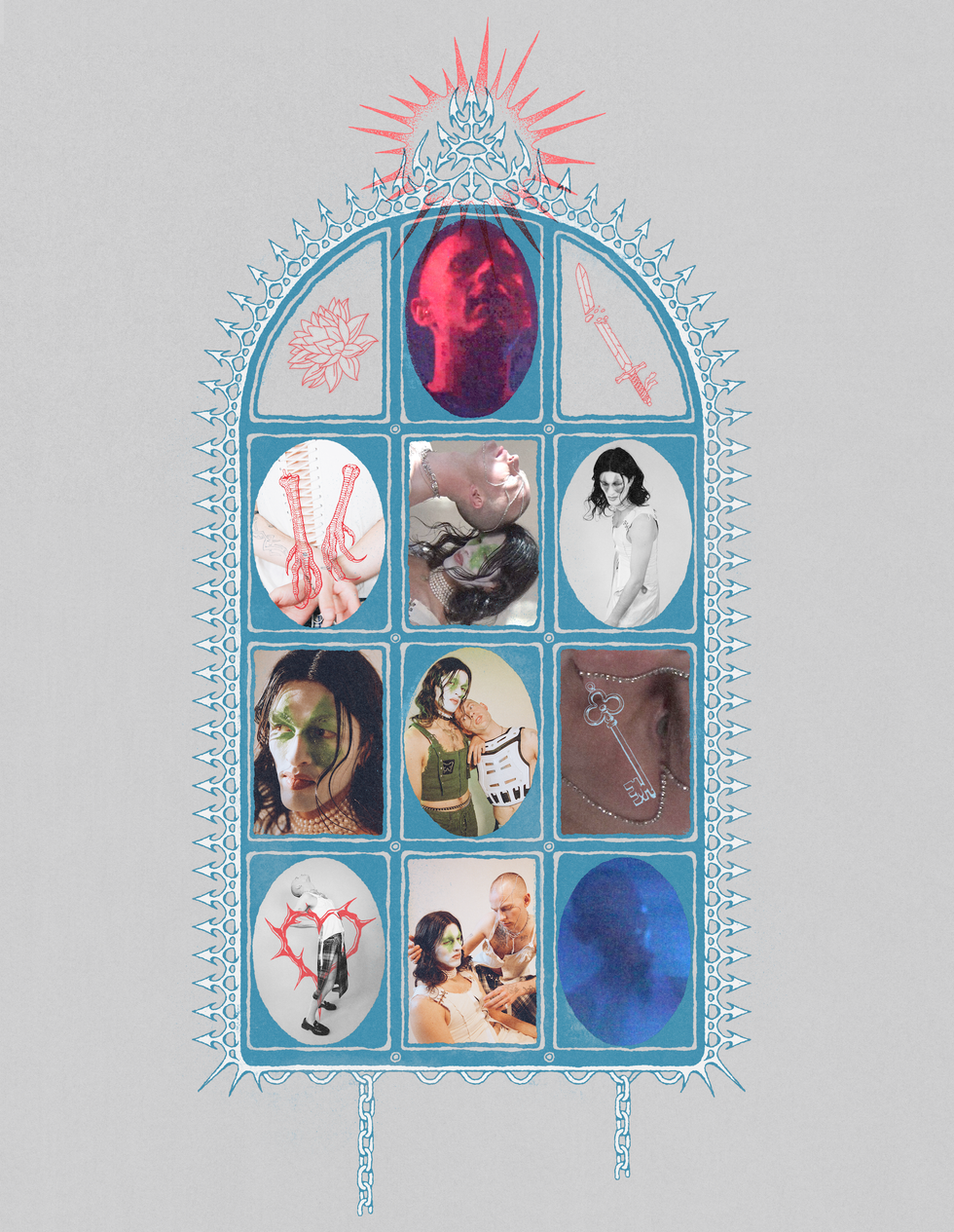
Throughout May, PAPER will roll out our final projects under the most recent editorial team. These pieces continue pushing forward our mission to provide a platform for fresh talent and important stories too often overlooked. From the subjects to the creatives behind the images, our hope is for you to discover new things and be inspired by what you see. As always, thank you for showing up and being part of our community. –Justin Moran, Editor-in-Chief
Photography: Lamia Karić (of Studio Förgätmigej)
Makeup: Johanna Jarmide Larsson
Styling: Amanda Mbalire
Photography assistant: Samuel Steen
Graphics: Johannes Helgelin (of Studio Förgätmigej)